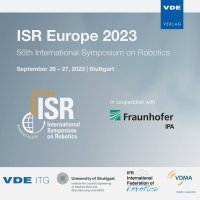Autonomous robotics in agriculture – a preliminary techno-economic evaluation of a mechanical weeding system
Konferenz: ISR Europe 2023 - 56th International Symposium on Robotics
26.09.2023-27.09.2023 in Stuttgart, Germany
Tagungsband: ISR Europe 2023
Seiten: 7Sprache: EnglischTyp: PDF
Autoren:
Rossmadl, Andreas; Busboom, Axel (Dept. of Engineering and Management, Munich University of Applied Sciences, Munich, Germany)
Gandorfer, Markus; Kopfinger, Stefan (Bavarian State Research Centre for Agriculture (LfL), Ruhrstorf, Germany)
Inhalt:
Autonomous agricultural robots offer potential economic, social and environmental benefits, e.g., in terms of reduced CO2 emissions or lower soil compaction. Their technical maturity and practical adoption, however, have been strongly lagging behind industrial robotics, mainly due to challenges related to complex, unstructured and dynamically changing environmental conditions. With recent advances in mechatronics, sensing and machine vision, commercial systems are starting to become available.We have created a framework for evaluating a commercial autonomous robot for mechanical weeding from a technoeconomic perspective, applied to organic sugar beet farming. The study entails field testing and data acquisition over an entire crop season (2021), as well as an economic model to estimate labour time and key investment metrics, such as net present value (NPV) and payback period. We show that an investment in the weeding robot can be economically compelling even for field sizes significantly below the maximum capacity, and additionally yields sustainability benefits. While costs for seasonal workers can be reduced, this benefit needs to be balanced against the fact that the farm operator needs to invest more time in the operation of the robot, compared to conventional machinery. Due to frequent disruptions requiring manual intervention, the farm operator also needs to invest substantial amounts of standby time. The resilience of agricultural robots, e.g., with regards to navigation signal loss or getting stuck in the field, remains a weakness of currently available systems.


